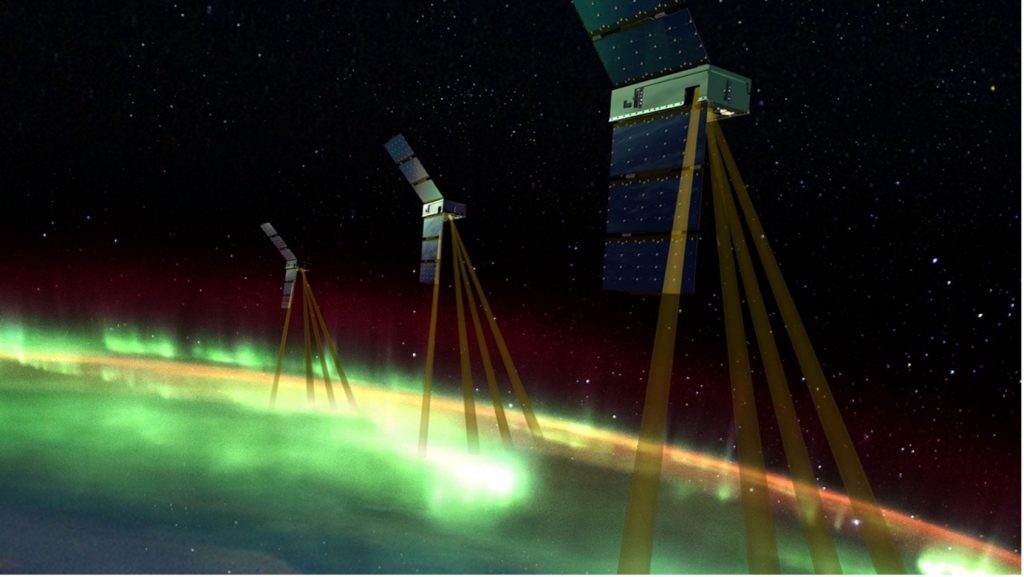After rigorous review, NASA’s Electrojet Zeeman Imaging Explorer (EZIE) mission – a mission to study electrical currents in Earth’s upper atmosphere – passed a key developmental milestone, pushing the mission from the design phase to the construction phase.
EZIE will study the auroral electrojets — intense electrical currents flowing about 65 miles (100 kilometers) above the ground in a layer of Earth’s atmosphere rich in charged atoms, or ions, called the ionosphere. These electrojets are closely related to the spectacular auroras that dance across the polar night skies. They’re part of a vast electrical circuit flowing between Earth and the surrounding space, out to some 100,000 miles away. EZIE’s findings will help solve decades-old debates about the electrojets’ structure and evolution and, in turn, will open the door to a more complete understanding of Earth’s space weather — magnetic events in space that can affect our ever increasingly technological society.

Launching no earlier than September 2024, EZIE will fly three identical CubeSats that will orbit the globe in a pearls-on-a-string formation. Each spacecraft will measure the electrojet current by imaging their “fingerprint.” The spacecraft will look at light being emitted from oxygen molecules below the electrojets at just 50 miles (80 kilometers) above the surface. The spacecraft will do this by exploring a phenomenon called Zeeman splitting, which is the splitting of a molecule’s light spectrum when placed near a magnetic field. Doing this means they can derive the magnetic field created by the electrojets as they flow and, in turn, detect the electrojets’ current. This new application of the Zeeman effect will allow scientists to infer the magnetic field produced by an electrojet current in the overlying ionosphere and, in turn, learn how the size and strength of these electrojets change when solar storms impact the magnetosphere.
Funding for EZIE comes from the Heliophysics Explorers Program, managed by the Explorers Program Office at NASA’s Goddard Space Flight Center in Greenbelt, Maryland. The principal investigator for the mission is Jeng-Hwa (Sam) Yee of the Johns Hopkins University Applied Physics Laboratory in Laurel, Maryland. NASA’s Jet Propulsion Laboratory will build the satellite instruments. Blue Canyon Technologies will provide the spacecraft and mission operations center, and it will perform systems integration and testing as well as mission operations. Maverick Space Systems will provide launch and deployment operations.
By Vanessa Thomas
NASA’s Goddard Space Flight Center, Greenbelt, Md.
